“Secret Space” est un environnement visuel avec anti-chambre imaginé par Nadia Lauro pour la performance And then I see the darkness de Barbara Kraus.
“Secret Space” invite le public à se vêtir de capes et à prendre place autour d’étranges tables de poker pour un « Hell Casting » orchestré par Aloisia Schinkenmaier.
And then I see the darkness! est l’histoire d’un exorcisme renversé.
“Secret Space” is a visual environment with an anteroom designed by Nadia Lauro for Barbara Kraus‘ performance And then I see the darkness.
“Secret Space” invites the audience to dress in capes and sit around strange poker tables for a “Hell Casting” orchestrated by Aloisia Schinkenmaier.
And then I see the darkness! is the story of an reversed exorcism.
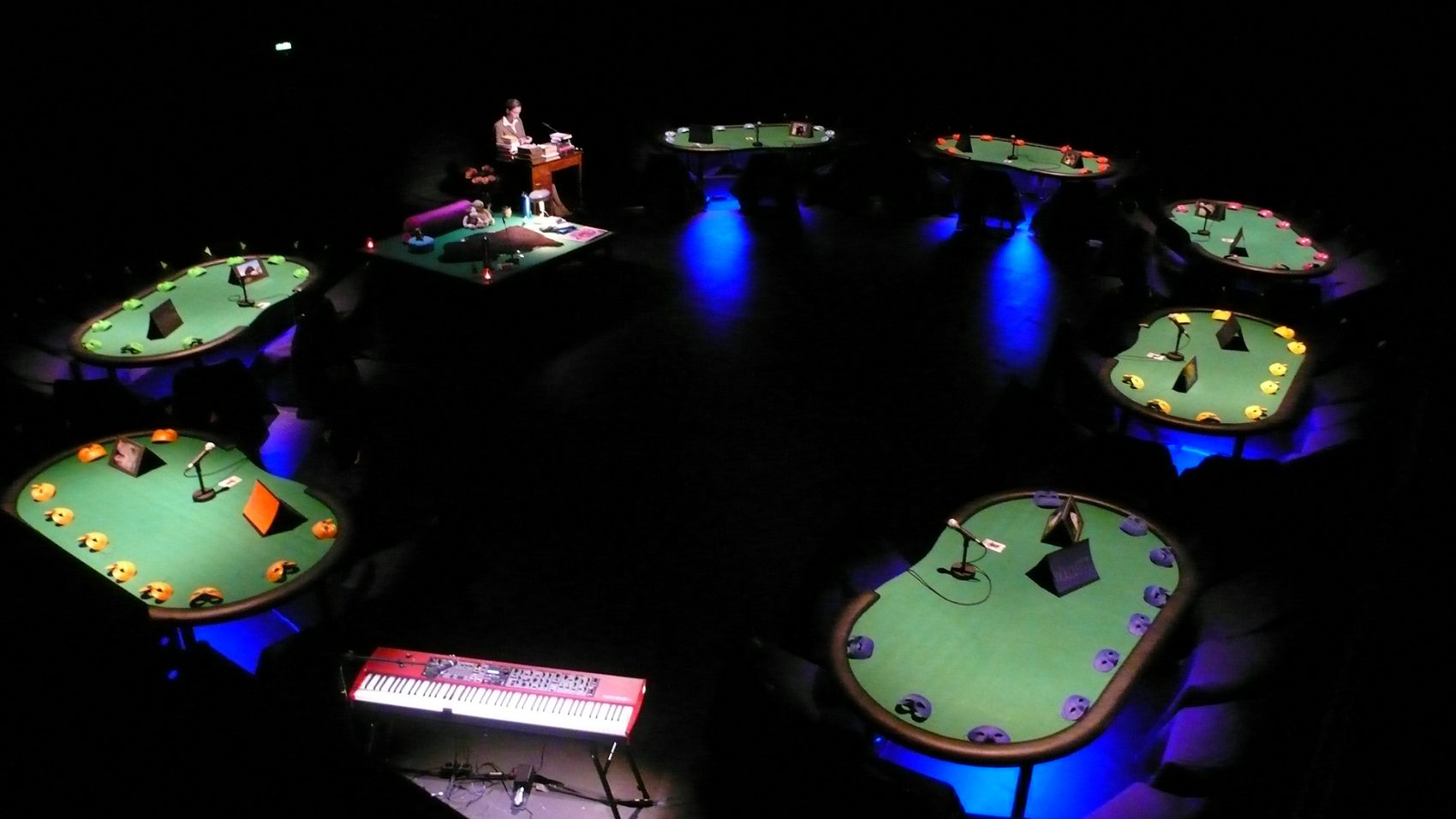
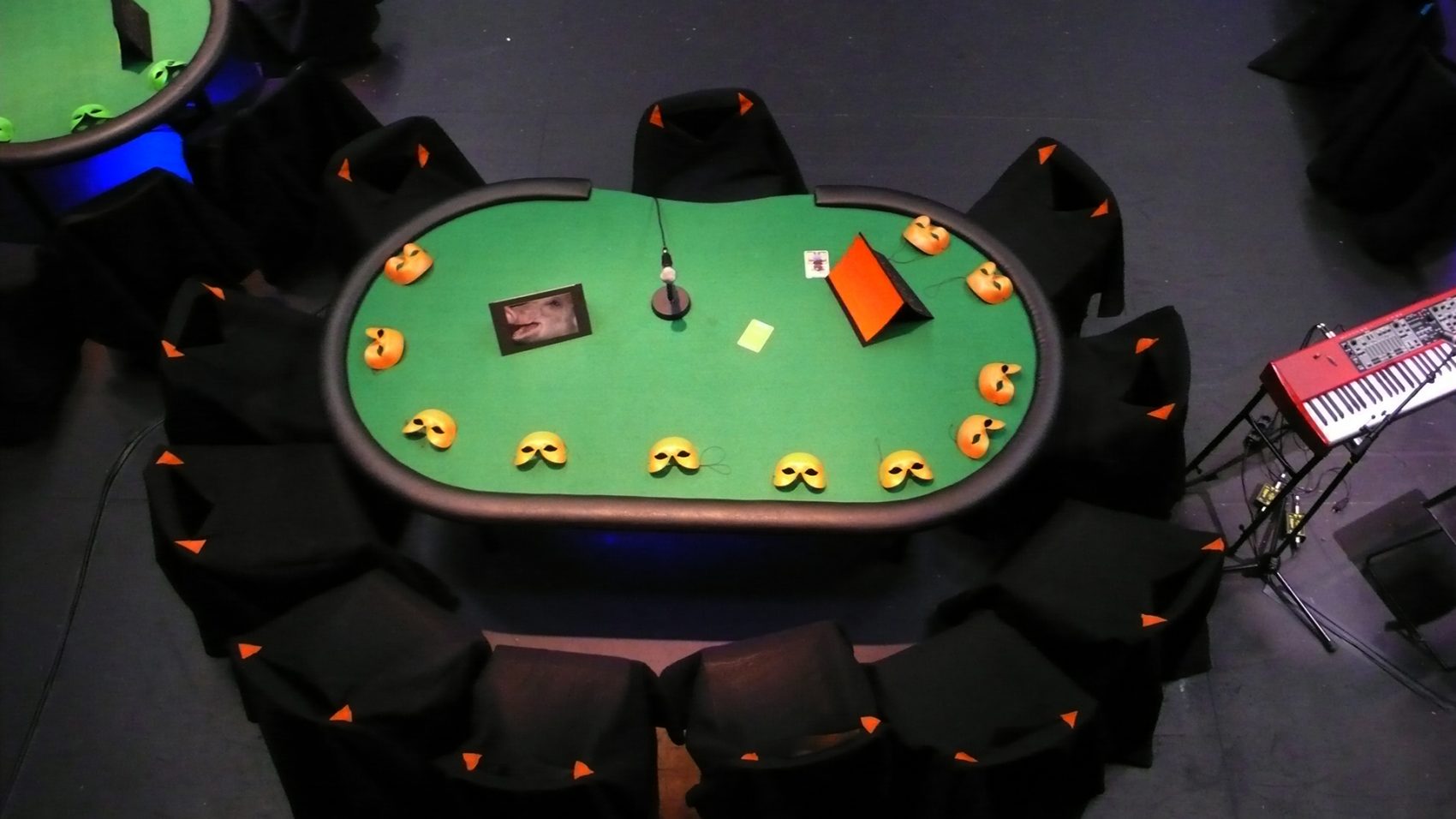
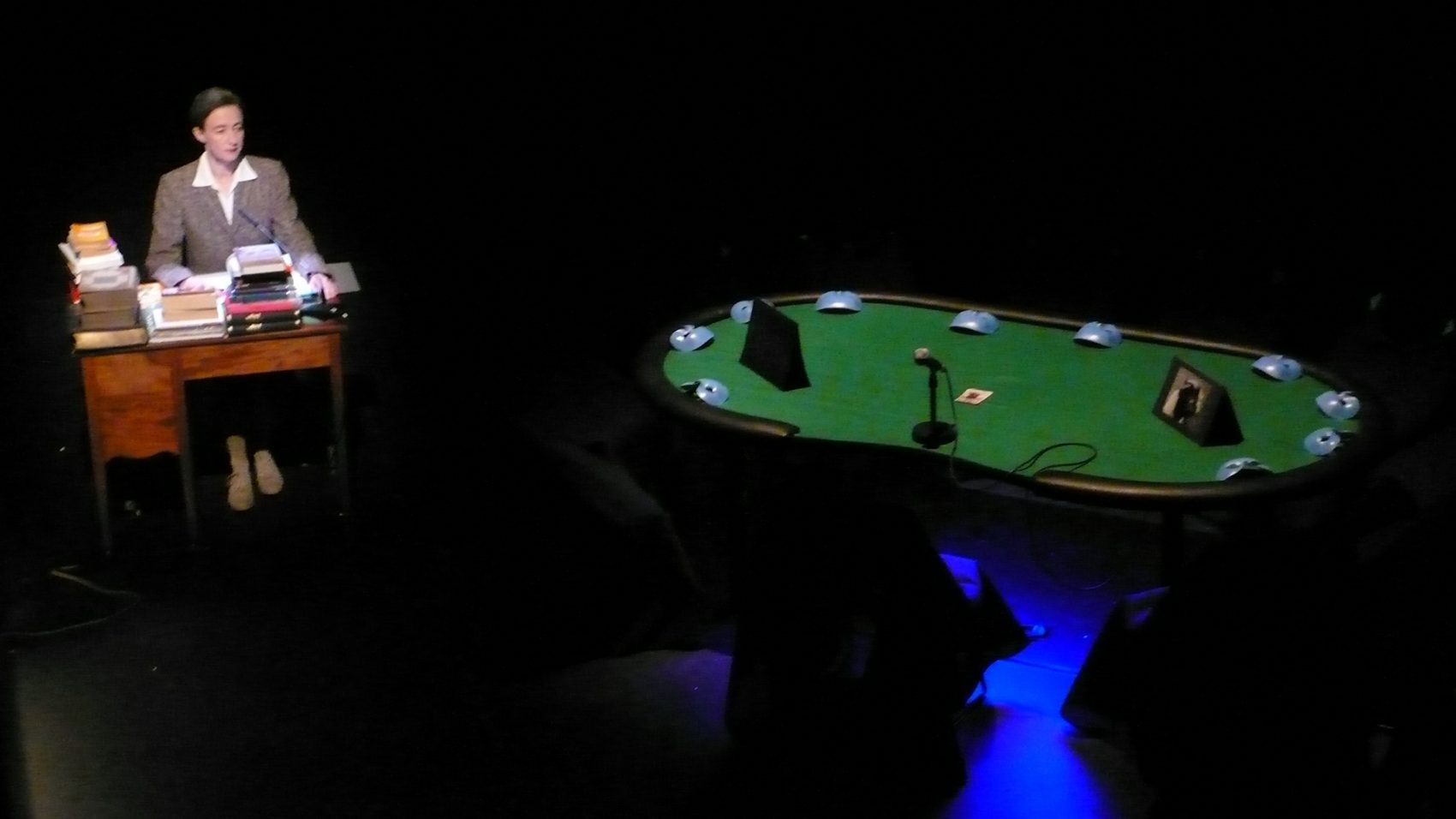

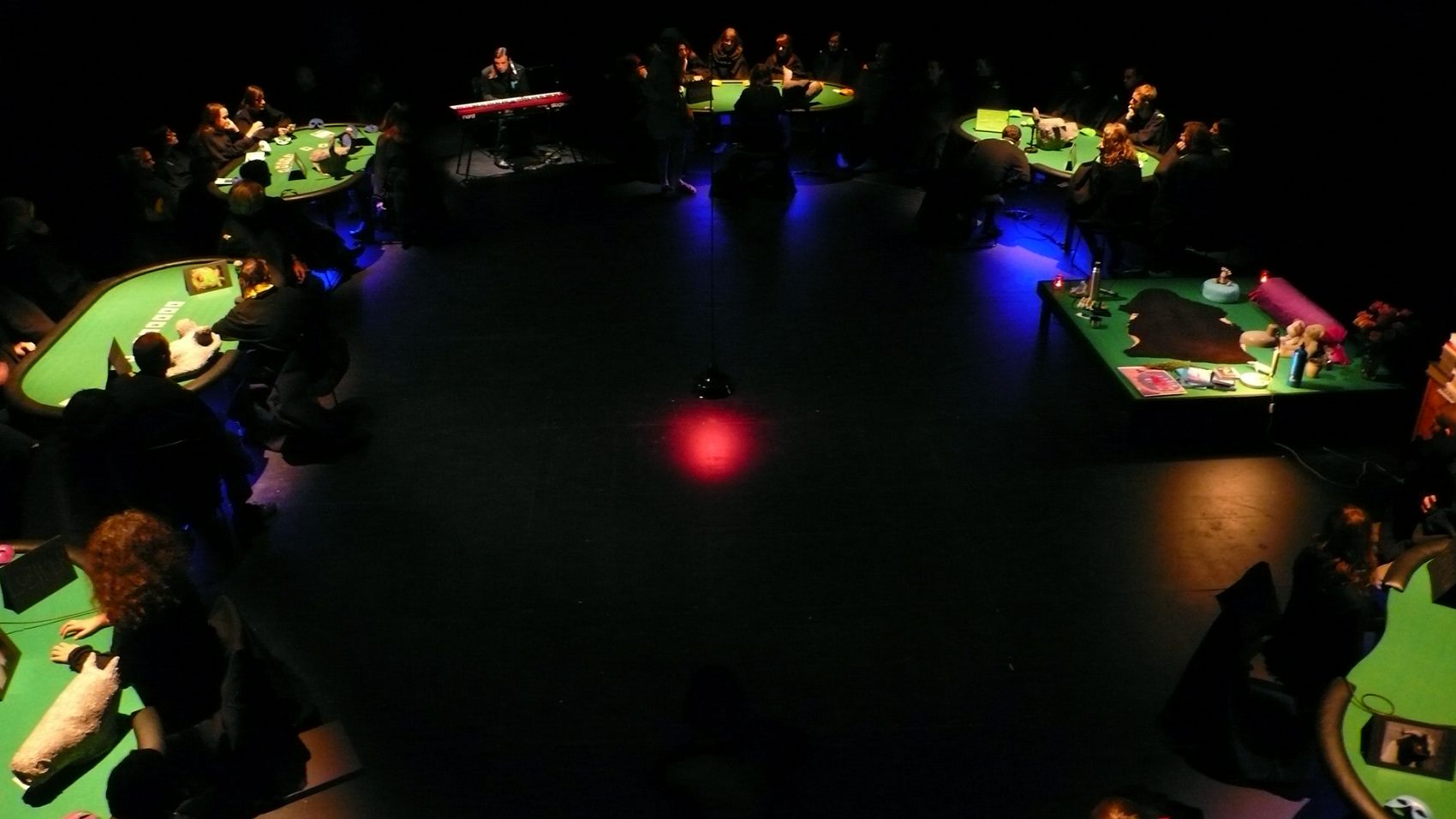
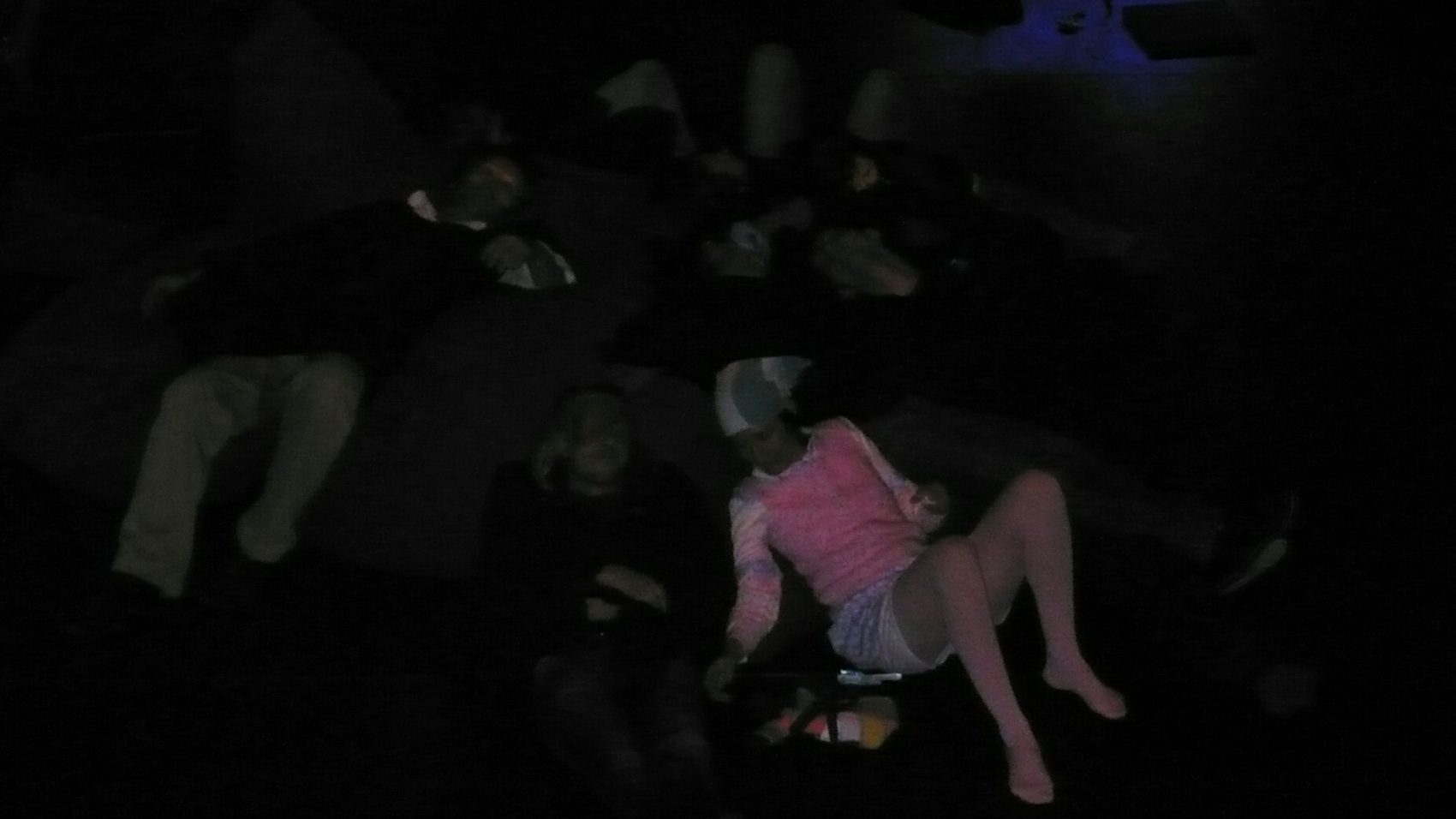
Credits And then I see the darkness
conception/performance Barbara Kraus
music/performance fabian Udulutsch
stage design/”Secret Space” Nadia Lauro
assistant stage design Paul Horn
dramaturgy/dramatic composition Christian Suchy
dramaturgy/research Renate Leisten
artistic consultation Jack Hauser
medium Aloisia Schinkenmaier
evil Dwarf Ignaz Unterwiener
eell Pianist Herr Vukic
creation Künstlerhaus Brut, Wien 2009
production Martin Leitner das Schaufenster
supported by Wien Kultur
And then I see the darkness
Aloisia Schinkenmaier’s Descent into Hell
In her new performance, Barbara Kraus delves into the energies and possibilities of madness and explores the phenomenon of religious possession. As part of her search for the ‘Best Evil One’ and based on the Seven Deadly Sins, she involves her audience in a Hell Casting , by means of which she offers everyone this once-in-a-lifetime chance to get in touch with his/her own demons and eventually form friendships with them.
In Shakespeare’s The Tempest it says: “Hell is empty, and all the devils are here.”
This is not the case in Aloisia Schinkenmaier’s world. Her devil can only be in hell, she is quite certain about that. They had cast him out when she was still a child. Now, forty years later, she looks back on the exorcism, asking herself what might have happened to him. As it seems, she actually misses him. Her power as a spiritual medium is in decline, and therefore, she sets out to descend into hell in order to find her devil…
“Hell is other people” – in this case the audience, who find themselves in a “Secret Space,” designed by visual artist, Nadia Lauro, while waiting for a performance by Barbara Kraus to begin. Instead, Aloisia Schinkenmaier appears, an Austrian medium with dissociative identity disorder. Mr. Vucic serves as the Hell Pianist who is supposed to spread good vibrations among the public. He himself is ill tempered and has seen better days. All things considered, this seems less terrifying than the worst nightmares from her childhood – long-ago – when, her vision of hell was a blood-red, burning, tantalised, dark something without end.
“And then I see the darkness” is the story of an exorcism reversed. It is an attempt at a reclamation and integration of the demonised in the shape of a final, grotesque Danse Macabre, which can be seen as a swan song and parody of life-denying religious fears.
“Go to the places that scare you!”
Dans sa nouvelle performance, Barbara Kraus explore les énergies et les possibilités de la folie et explore le phénomène de la possession religieuse. Dans le cadre de sa recherche du «Best Evil One» et basée sur les sept Deadly Sins, elle implique son public dans un Hell Casting, au moyen duquel elle offre à chacun cette occasion unique d’entrer en contact avec ses propres démons et finissent par nouer des amitiés avec eux.
Dans The Tempest de Shakespeare, on peut lire: “L’enfer est vide et tous les démons sont là.”
Ce n’est pas le cas dans le monde d’Aloisia Schinkenmaier. Son diable ne peut être qu’en enfer, elle en est tout à fait certaine. Ils l’avaient chassé quand elle était encore enfant. Quarante ans plus tard, elle revient sur l’exorcisme et se demande ce qui lui est arrivé. Comme il semble, elle lui manque réellement. Son pouvoir en tant que médium spirituel est en déclin, et par conséquent, elle se lance dans l’enfer pour retrouver son diable …
« L’enfer c’est les autres » – en l’occurrence le public, qui se retrouve dans un “Secret Space”, conçu par la plasticienne Nadia Lauro, en attendant le début d’une performance de Barbara Kraus. Au lieu de cela, Aloisia Schinkenmaier apparaît, un médium autrichien avec un désordre identitaire dissociatif. M. Vucic est le pianiste de l’enfer qui est censé répandre de bonnes vibrations parmi le public. Lui-même est mal luné et a connu des jours meilleurs. Tout compte fait, cela semble moins terrifiant que les pires cauchemars de son enfance – il y a longtemps – quand sa vision de l’enfer était une chose rouge sang, brûlante, passionnante, sombre et sans fin.
“Out Demons, Out!” Est l’histoire d’un exorcisme renversé. Il s’agit d’une tentative de récupération et d’intégration des diabolisés sous la forme d’un final, grotesque Danse Macabre, qui peut être vu comme un chant de cygne et une parodie des peurs religieuses qui nient la vie.
“Va dans les endroits qui te font peur!”
Credits And then I see the darkness
conception/performance Barbara Kraus
music/performance fabian Udulutsch
stage design/”Secret Space” Nadia Lauro
assistant stage design Paul Horn
dramaturgy/dramatic composition Christian Suchy
dramaturgy/research Renate Leisten
artistic consultation Jack Hauser
medium Aloisia Schinkenmaier
evil Dwarf Ignaz Unterwiener
eell Pianist Herr Vukic
creation Künstlerhaus Brut, Wien 2009
production Martin Leitner das Schaufenster
supported by Wien Kultur